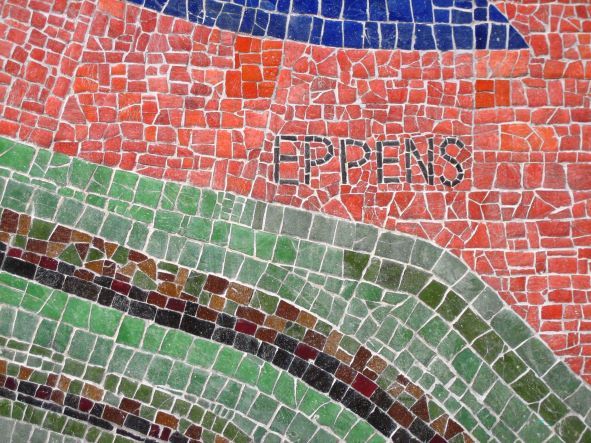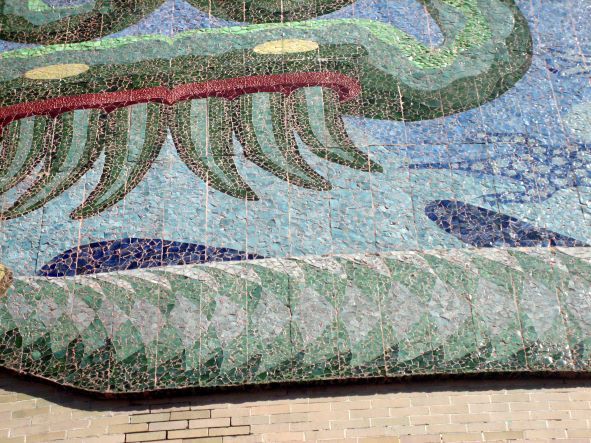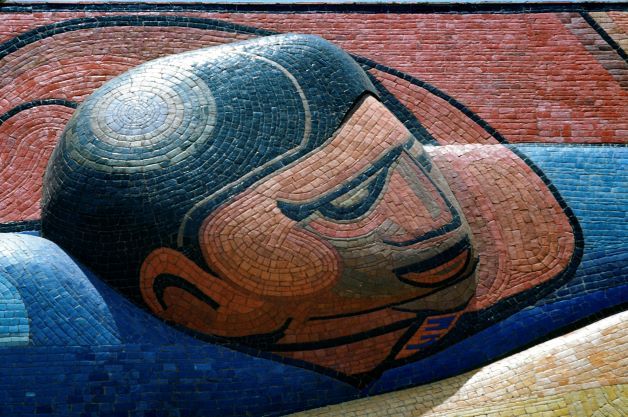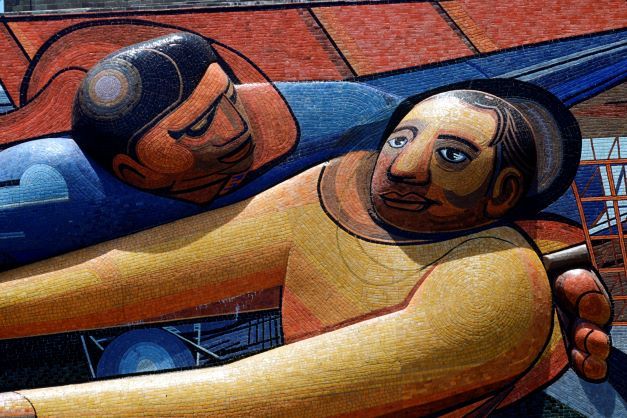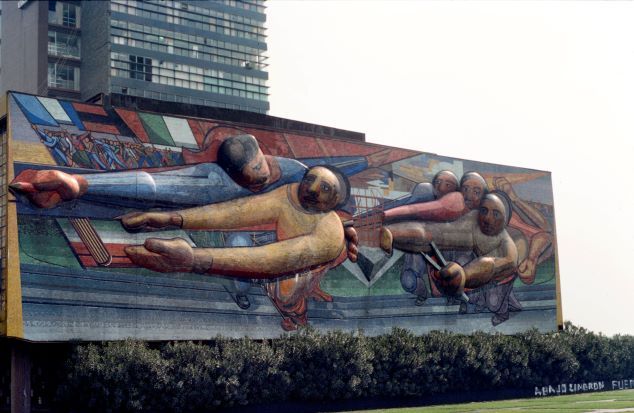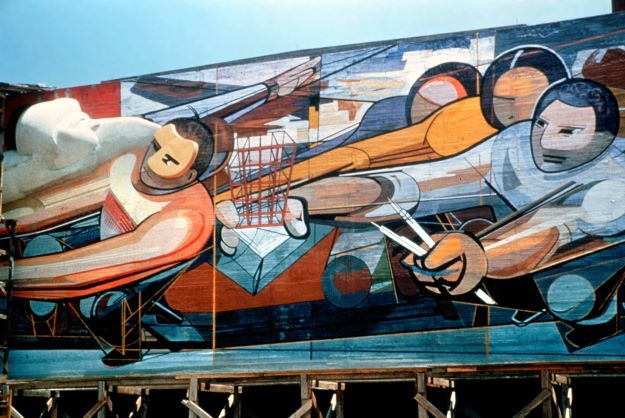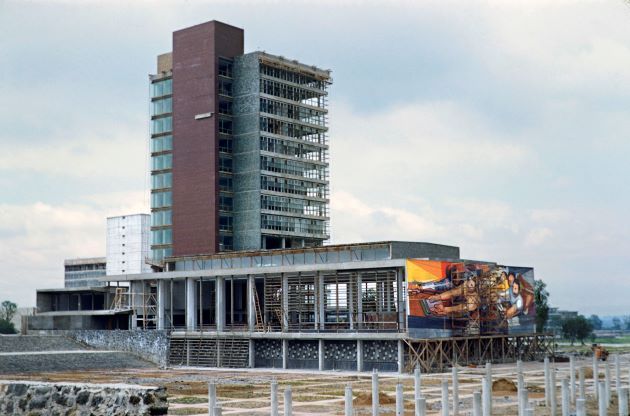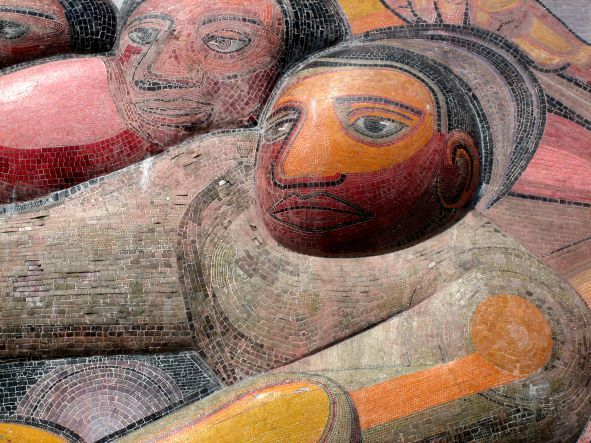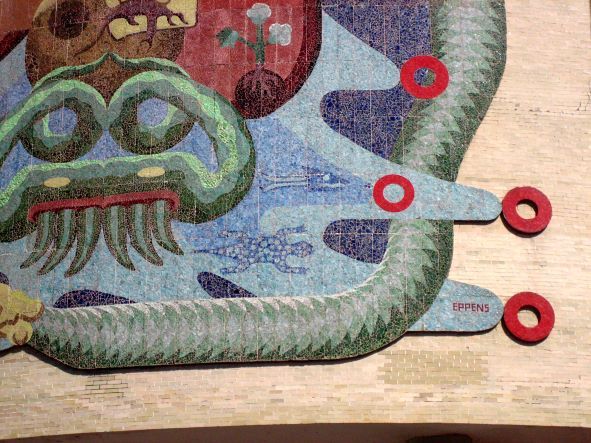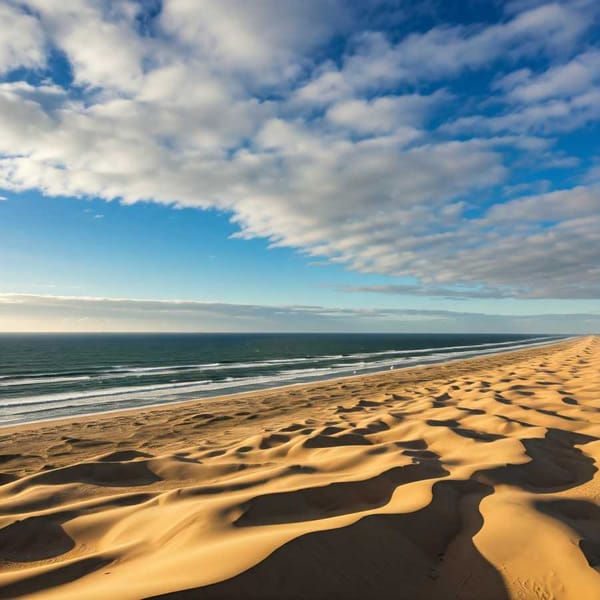Unfinished mural sketch by Diego Rivera in University City
It would have had a sculptural character. The artist represented diverse activities related to chemistry, such as the production of iron, steel, cement, and glass, the extraction of minerals, as well as goldsmithing, among others.

At the end of 1955, while he was in a hospital in the Soviet Union, where he was undergoing a new treatment for the prostate cancer he was suffering from, Diego Rivera began to make -at the request of Carlos Lazo, who had been general manager of works at Ciudad Universitaria and was now serving as secretary of Communications and Public Works in the government of President Adolfo Ruiz Cortines, the sketches for the mural La ciencia química presente en las principales actividades productoras útiles a la sociedad humana (The chemical science present in the main productive activities useful to human society), which would be executed on the headwalls of Building A of the then National School of Chemical Sciences (ENCQ) of the UNAM.
"From the study of those sketches, which remain in the NSU Art Museum Fort Lauderdale, in Florida, United States, it is known that the new mural would have a sculptural character, like La Universidad, la familia y el deporte en México (The University, family, and sports in Mexico), done some years before by Rivera himself in the Olympic University Stadium", indicates Itzel Rodríguez Mortellaro, academic of the School of History of the Faculty of Philosophy and Letters.
In those sketches, Rivera represented diverse activities related to chemistry, such as the production of iron, steel, cement, and glass, the extraction of minerals, and goldsmithing, among others. However, nothing of what he drew in them was transferred to the headwalls of the ENCQ.
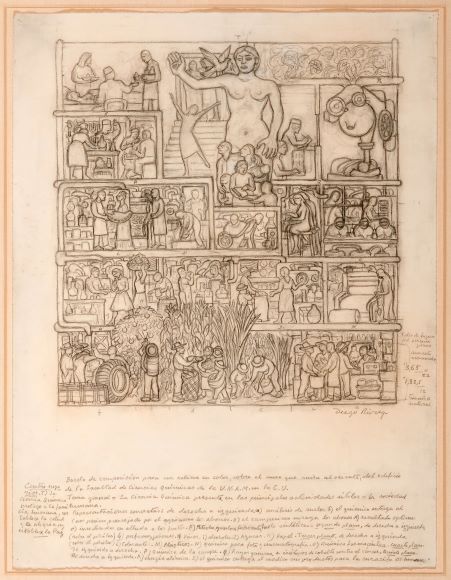
There are several hypotheses in this regard. One says that Rivera was already very ill and did not have the strength to continue working; another, that it was a monumental project which implied an enormous technical effort to create reliefs on concrete; and yet another, that after Carlos Lazo died in a plane crash on November 5, 1955, it was postponed again and again until it was finally canceled.
"On the other hand, while some architects accepted the intervention of the muralists in their works, such as Enrique Yáñez, one of those who designed the ENCQ, others rejected it. Perhaps this discrepancy between architects and muralists also influenced the fact that the chemical science present in the main productive activities useful to human society did not materialize," says Rodríguez Mortellaro.
In any case, the making of this mural did not go beyond some sketches in which, in addition to the drawings, some annotations made by the artist from Guanajuato can be observed. "Probably, those sketches were only part of a preliminary project that Rivera could have developed further if the conditions and circumstances of his life had been different," adds the academic.
Rational approach
Rivera praised the architecture of the Olympic University Stadium, which resembles the crater of a volcano. Therefore, according to Rodríguez Mortellaro, he thought that, if he wanted to be in harmony with it and the natural environment of the place, the most appropriate thing to do was to use colored stones to make The University, the family, and sports in Mexico on the main façade of this iconic construction of Ciudad Universitaria.
"In contrast, today's Faculty of Chemistry is a building of concrete, steel, and glass, with an international style architecture that he did not like. The interesting thing here is to see how he sought to adapt his sketches to that type of architecture. His approach is very rational because they are grids that somehow harmonize with the facade of the building, which is also a grid but made of glass. Thus, they look like windows through which you can see how the different chemical processes that transform raw materials into products beneficial to mankind are carried out".
According to Rodríguez Mortellaro, Diego Rivera's idea of plastic integration was very organic in the Olympic University Stadium; however, in the ENCQ he had to adapt to the rather rational-geometric layout of this building. "This is what we see in the sketches: the steel frames that dialogue with the steel structure of the building and gives support to some murals-windows that dialogue with the glass windows of the building," she points out.
Feminine and masculine allegories
One of the sketches includes a female allegory and is more oriented toward medicine, agrochemicals, and painting. Moreover, one of the scenes shows Frida Kahlo receiving a palette of colors from a man, in allusion to the chemistry of pigments for plastic artists. The other sketch includes a male allegory and deals, above all, with mining and metallurgical processes, although armed men also appear at the top.
"In addition, in the right hand of both allegories there is an eye that refers to knowledge and inner vision," says the university professor.
Another characteristic of the sketches of the mural La ciencia química presente en las principales actividades productoras útiles a la sociedad humana is that they show a horizontal organization of production, since no authority is seen in them.
"All the characters are on the same horizontal plane. I hypothesize that this scenario fit very well with Rivera's admiration for the Soviet Union's form of industrialization and production. Let us not forget that, although he had been expelled from the Mexican Communist Party in 1929, he was granted reinstatement to its ranks in 1954, after the death of Frida Kahlo. And when he traveled to the Soviet Union in 1955, he was more communist than ever," notes Rodríguez Mortellaro.
On December 1, 2021, to commemorate the 105th anniversary of ENCQ, the two sketches (one after the other) were projected, in what was a multimedia show, on the western wall of Building A of the Faculty of Chemistry. "The idea came from the Faculty and a contemporary interpretation of them was made, for which they were given color and movement", concludes the academic.
